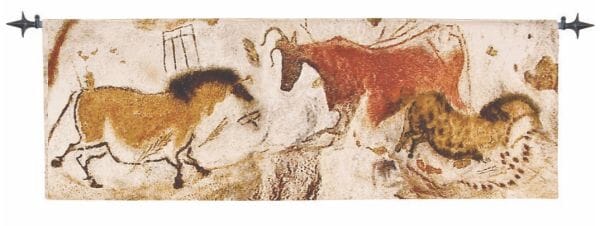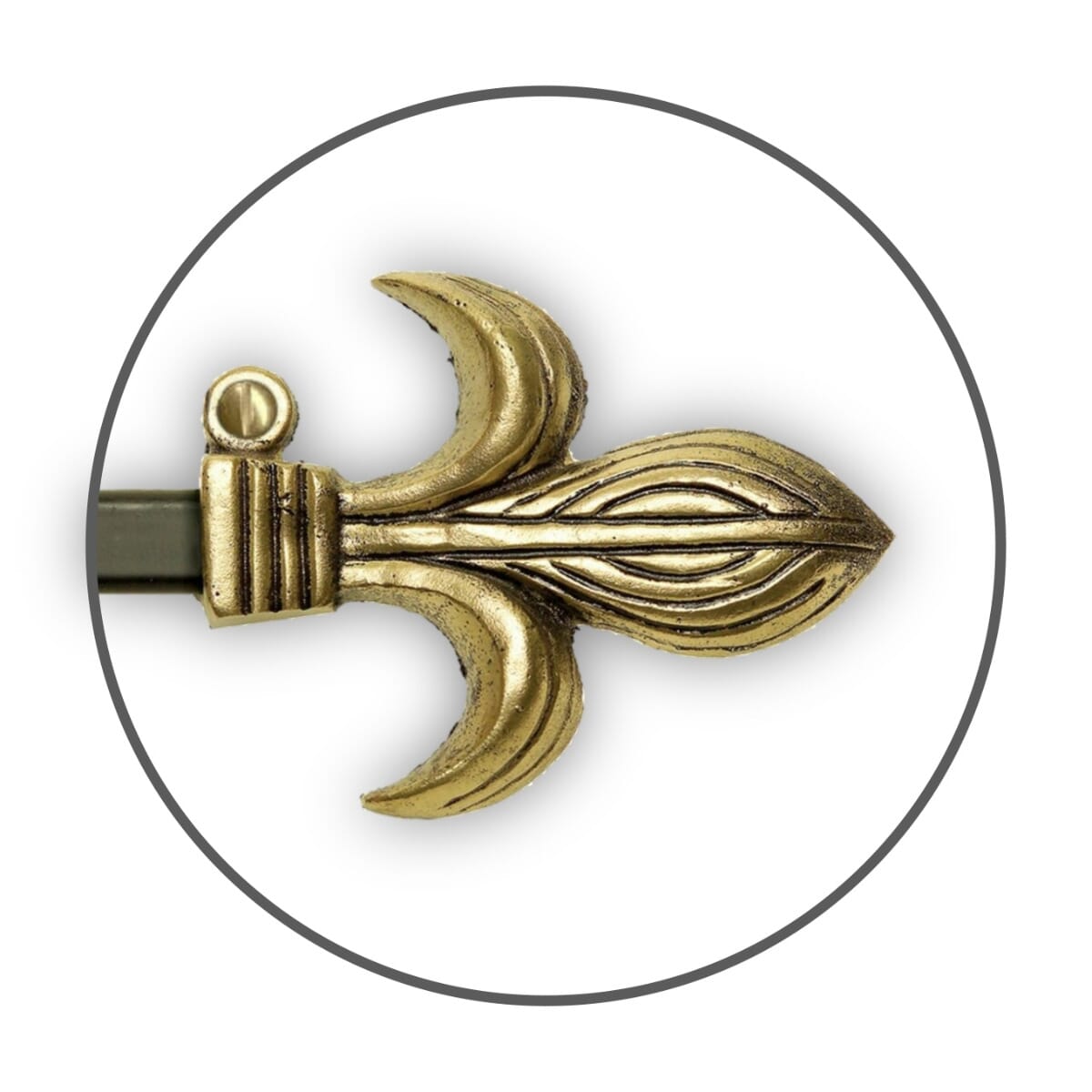Lascaux Cave Art (A) Loom Woven Tapestry - 54 x 158 cm (1'9" x 5'2") - Requires Rod Size 4
 
Hanging rods are purchased seperately - please click here to order
This beautiful tapestry is woven on a jacquard loom by skilled weavers, keeping alive the centuries old tradition of tapestry manufacturing from generation to generation. This tapestry is fully lined incorporating a sleeve along the top for hanging with a Hines hanging rod. Alternatively, this tapestry can be hung with a wooden batten which is a concealed method of hanging.
This beautiful tapestry is woven on a jacquard loom by skilled weavers, keeping alive the centuries old tradition of tapestry manufacturing from generation to generation. This tapestry is fully lined incorporating a sleeve along the top for hanging with a Hines hanging rod. Alternatively, this tapestry can be hung with a wooden batten which is a concealed method of hanging.
Hanging rods are purchased seperately - please click here to order
| Sizes Available | 54 x 158 cm (1'9" x 5'2") - Requires Rod Size 4 |
| Orientation | Landscape |
| Tapestry Type | Loom Woven |
| Loom Woven In | Belgium |
| Composition | 42% cotton, 40% wool, 18% trevira |
| Finished In | United Kingdom |
| Brand | Hines of Oxford |
| Finish on reverse | This tapestry is fully backed with luxury cotton lining incorporating a sleeve along the top for hanging purposes. See Hanging Options below for more information. |
| Hanging Options | The finish on the back of this tapestry is designed to accept a Hines hanging rod |
| Care Instructions | Lightly vacuum with a hand-held attachment to remove any surface dust. Professional Clean Only (Do not machine or hand wash). Click here for more information. |
Delivery
Hines Tapestries are normally packed rolled to ensure they arrive as crease free as possible and are normally despatched by courier. Please click here for delivery rates & more shipping information.
Returns
We want you to be happy with your purchase from Hines of Oxford. If you're not for any reason please fill out the return request form and wait to hear from the team with approval. You have up to 14 days of receiving your order in which to notify us that you wish to return the item and another 14 days in which to send it back (total of 28 days). Please Note: Any orders that are returned without approval may not be refunded, please fill out the returns form first or give us a call on +44 (0)1865 741144.
Stock
Although we normally hold everything in stock for quick delivery, sometimes items that are shown online for purchase aren't in stock ready for quick despatch. This is normally due to unprecedented demand and a time delay in updating stock online.
Checking a Tapestry is in stock
If you are ordering for a specific event or special occasion or simply need it to arrive by a particular date please email us on sales@hinesofoxford.com or call us on +44 (0)1865 741144 quoting the SKU reference and the date you need delivery by. We will quickly let you know if your desired item(s) is available within the timeframe given.
Write Your Own Review


This beautiful tapestry is woven on a jacquard loom by skilled weavers, keeping alive the centuries old tradition of tapestry manufacturing from generation to generation. This tapestry is fully lined incorporating a sleeve along the top for hanging with a Hines hanging rod. Alternatively, this tapestry can be hung with a wooden batten which is a concealed method of hanging.
This beautiful tapestry is woven on a jacquard loom by skilled weavers, keeping alive the centuries old tradition of tapestry manufacturing from generation to generation. This tapestry is fully lined incorporating a sleeve along the top for hanging with a Hines hanging rod. Alternatively, this tapestry can be hung with a wooden batten which is a concealed method of hanging.
Hanging rods are purchased seperately - please click here to order
Stock Availability
We aim to keep everything in stock but this isn't always possible. Please call or email us if you need to check stock availability and we will be pleased to advise you on this products current status.
Payment
In addition to all major credit/debit cards, we also accept Bank Transfers, Cash & Cheques.
Delivery
We deliver to over 50 countries worldwide. Please check on our website for the charge to your address.
Returns
If you aren't completely satisfied with your purchase you can return it. For more information please check online.










